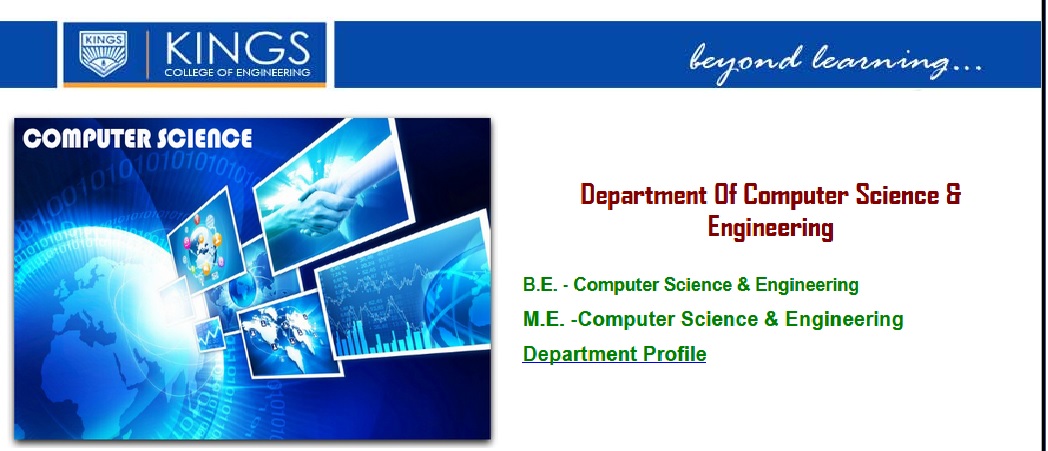IT1251 Software Engineering & Quality Assurance Question Bank : kings.ac.in
Name of the College : Kings College Of Engineering
Department : Information Technology
Subject : Software Engineering & Quality Assurance
Website : kings.ac.in
Document Type : Question Bank
Download Model/Sample Question Paper : https://www.pdfquestion.in/uploads/ki…8-SQA%20qb.pdf
Kings Software Engineering Question Paper
Unit I
Software Product And Process :
Part-A : (2 Marks)
1. What is meant by Software Engineering?
2. What are the characteristics of Software?
Related : Kings College Of Engineering IT1352 Network Programming & Management Question Bank : www.pdfquestion.in/321.html
3. What are the phases of Problem solving Loop?
4. List out the activities of Linear Sequential Model.
5. Mention some of the drawbacks of RAD model.
6. What are the types of changes encountered during the Support phase?
7. Define Business process engineering.
8. What are the elements of Computer based Systems?
9. Define Software Lifecycle.
10. What are the functions of data architecture?

11. Define System Modeling?
12. State the System Engineering Hierarchy?
13. Mention some of the factors to be considered during System Modeling.
14. What are the different architectures developed during BPE?
15. Define Verification &Validation.
16. Write any two software engineering challenges.
17. Which software model leads to software reuse? Why?
18. Give at least two reasons for prototyping is problematic.
19. Differentiate system and computer based system.
20. Define ‘software engineering’ and ‘system engineering’.
21. What is software process model?
Part B :
1. Explain the linear software life cycle model with suitable illustration. Bring out the demerits of this model. (16)
2. (a) How do you differentiate software engineering from system engineering? (6)
(b) For each of the types of process models, identify the types of project suitable to implement. (6)
(c) Distinguish between verification and validation process. (4)
3. (a) What is meant by generic view of software engineering? Brief it. (8)
(b) Explain the process model which is useful when staffing is unavailable for complete implementation. (8)
4. (a) What is the difference between system and computer based system?(8)
(b) What is prototyping? Mention its types. Also explain this model with advantages and disadvantages. (8)
5. Define Software process model? Explain any one of it with a neat diagram(16)
6. Explain the hierarchy of Business process Engineering. (16)
7. Explain Software Life cycle process (16)
8. Explain Evolutionary process model (16)
9. Explain the different layers of Software Engineering? (16)
10. (a) Describe the process model which defines a network of activities? (8)
(b) Why the “first system’s throw away system? Explain the concept with advantages and disadvantages. (8)
11. (a) Draw a system engineering hierarchy diagram and explain the concept? (8)
(b) Explain the process model that combines the elements of waterfall and iterative fashion. (8)
Unit-II
Software Requirements :
Part- A :(2 Marks)
1. What is meant by System Requirements?
2. What are the types of Software system requirements?
3. Write down the functional requirement for a Library management system.
4. Mention some of the Notations for requirements specification.
5. Define the term product and process in software engineering
6. Define Requirement Engineering.
7. Mention some of the process activities of Requirement Elicitation & analysis.
8. What are the different types of checks carried out during Requirement Validation?
9. Define Traceability
10. Draw the principle stages of Change management process.
11. State the primary objectives of analysis Model.
12. Define Data objects, attributes & relationship.
13. Define Cardinality & Modality.
14. State Entity /Relationship diagram.
15. Define Data Flow Diagram.
16. What is meant by Information flow Continuity?
17. Define Behavioral Modeling.
18. What is meant by Data dictionary?
19. What does data dictionary contains?
20. What is meant by Throw away Prototyping?
21. Specify at least six context free questions.
22. What is the purpose of domain analysis?
23. List some non-functional requirements of software, with an example.
Part – B :
1. (a) With a suitable example explain about the application of use cases in deriving the scenarios. (8)
(b) Explain the various prototyping methods and tools used for requirements analysis. (8)
2. Discuss in detail about the elements in data modeling. (16)
3. (a) Differentiate functional and nonfunctional requirements and explain. (8)
(b) Why the customer interaction is a difficult process? Explain one formal procedure used for customer interaction. (8)
4. (a) Draw an E-R diagram for university information system. specify at least four Cardinality and modality relationships in this. (8)
(b) Explain the relationships between data and control models with diagram. (8)
5. (a) Explain the feasibility studies. What are the outcomes? Does it have either explicit or implicit effects on software requirement collection? (8)
(b) What are prototyping techniques? How prototype models are prepared for software process? Discuss. (8)
6. (a) Describe how software requirements are documented? State the importance of documentation. (8)
(b) Explain the software requirement analysis and modeling. (8)
7. Explain Transform Mapping with Safe home Software. (16)
8. Explain briefly Functional Modeling. (16)
9. Explain the various Design concepts in detail. (16)
10. Discuss the various phases of Analysis Modeling. (16)